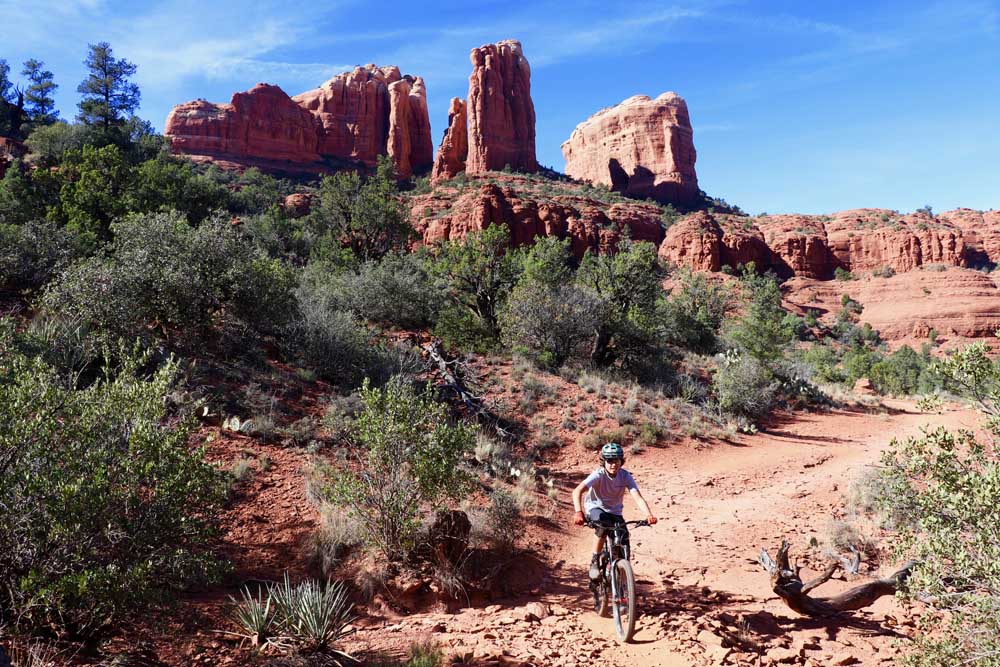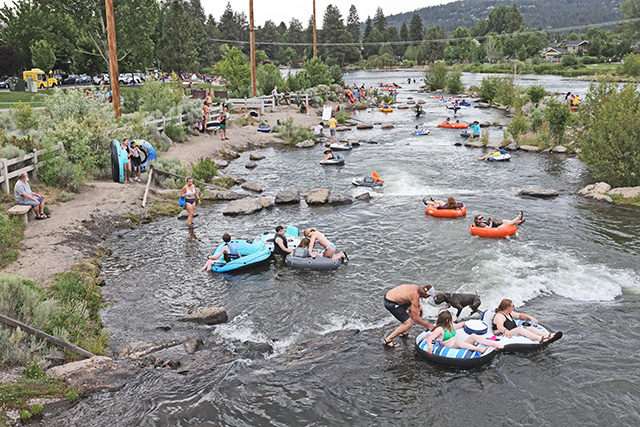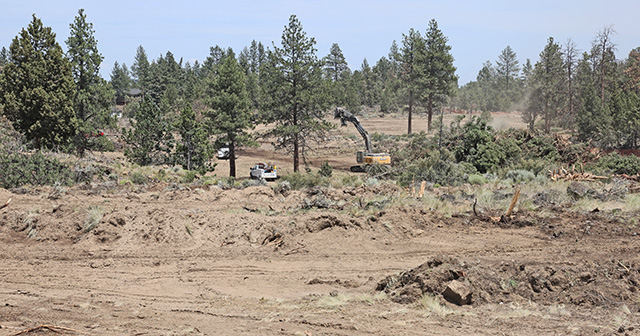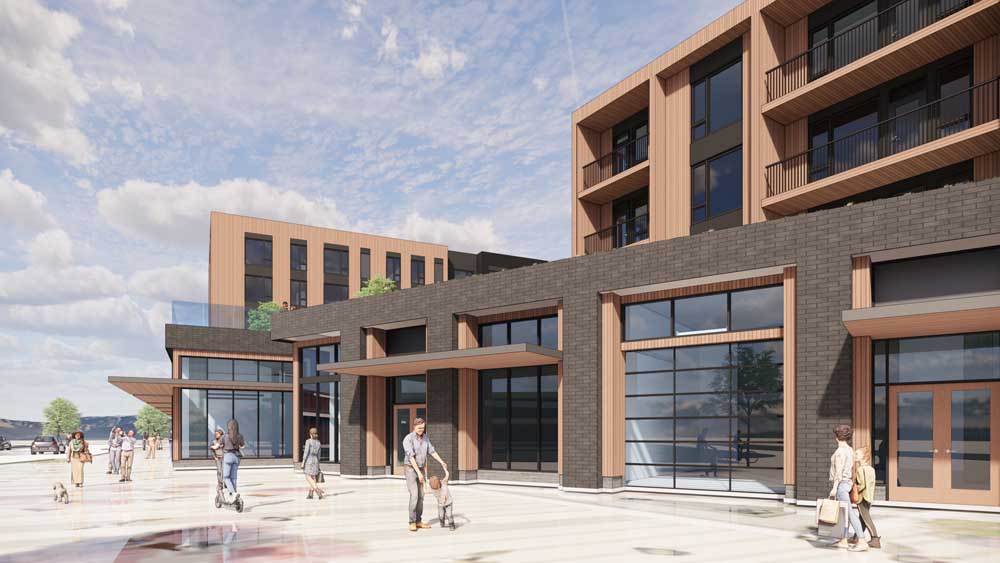Arizona tourist town’s answer to homelessness: A parking lot to sleep in
Published 5:37 pm Sunday, March 24, 2024

- Sedona, Arizona, a tourist town with more than 200 miles of singletrack trails, recently agreed to set up a parking lot to allow people sleeping in their vehicles a place to park overnight.
It is the driver who takes tourists on Jeep tours.
It is the veteran who works as a carpenter.
It is the person who works at the Whole Foods that sells sashimi-grade salmon for $44.99 a pound.
They all live a precarious life sleeping every night in their cars parked somewhere around Sedona, Arizona.
It’s become a big problem for the tony tourist town, which is why the Sedona City Council approved a program last week that temporarily converts an empty parking lot into a place where families or workers or students can live while trying to find a permanent home.
Detractors said they feared the lot would eventually become an encampment of tents, which are not allowed under the program.
“It’s a very slippery slope,” one resident wrote to the city. But proponents argued that this is needed in a city that lacks affordable housing and where business owners say no one wants to work to service a steady stream of tourists. City officials say state protections for short-term rental hosts make it difficult to provide affordable housing.
Councilors voted 6-1 on March 12 to provide 40 first-come, first-served spots for people experiencing vehicular homelessness to have a safe place to park.
“When you have something as divisive as this, you could break this community. And I don’t want to see that happen,” said Vice Mayor Holli Ploog before lodging the sole dissenting vote.
Ploog said she didn’t like the process that led to the vote.
This is all happening in a city where temperatures reach as low as the 30s and as high as the triple digits, but those against the project want the lot to again host a music venue and not provide safety for those living in their cars.
“They just [derailed] our project with no care for the working people,” Mayor Scott Jablow told The Washington Post on Monday.
He said critics spread misinformation, saying that the project will draw people from throughout the country, but the program is built to ensure that doesn’t happen: Participants must provide vehicle registration and proof of insurance along with a proof of employment or a school voucher.
Those who live in their vehicles have found refuge parking overnight in the Coconino National Forest, but recent changes curbed the length of overnight camping stays. Others just park in business parking lots or on streets, prompting police to shoo them away.
People living out of their cars face different challenges than people experiencing homelessness who live outside, according to an agenda item. They risk towing and impoundment (and the associated fees) while having an unmoored place to sleep. “They often maintain work and community ties not afforded to individuals living on the street,” city staff wrote.
There was an outpouring of emotion from both sides of the issue, as seen by the roughly 65 people who spoke during the public comment portion of the meeting. People also wrote in trying to persuade city councilors.
“The site is likely to become a magnet for chronically unemployed people who come to Sedona seeking an essentially free place to sleep,” wrote resident William D. Noonan, adding that it will be home for “someone who works an hour or two a week for the opportunity to live at taxpayer expense in one of the most scenic homeless sites in the country.”
Another resident, Joanne L. Makielski, wrote that it was unfortunate that it had to be considered, but it did. “These are people who work in our town and we all depend on them. We must support them. Denying this program will not make our homeless population go away,” she wrote. “Let’s give them a ray of hope.”
The Verde Valley Homeless Coalition will manage the site, which will be active from 4 p.m. to 8 a.m. every day. The site will otherwise be closed with fencing to ensure that it doesn’t turn into an encampment, as many residents fear.
There will be portable restrooms along with trash and recycling bins. There will also be an area to cook meals.
The site is sorely needed, according to officials: The city’s housing needs assessment in 2020 found that Sedona had an unfulfilled need for 1,260 affordable housing units.
Short-term rentals have greatly increased since 2020, from 744, or 12% of the city’s housing stock, to 1,089 units, or 16%. That has provided more space for tourists and created jobs while “decreasing housing availability for locals,” according to the agenda item.
Jablow said state restrictions on short-term rentals have tied the hands of local officials to help residents.
In 2016, Arizona passed a law that prevented cities and counties from banning short-term rentals.
Home prices have shot up 50% since 2020, from an average of $645,000 in the first half of 2020 to $971,000 in the first half of 2023, according to the staff report. Rent for an average two-bedroom apartment is now $2,150 a month.
Like many cities that depend on tourism to stay afloat, Sedona has struggled with having enough affordable housing for its workforce. The solution to the current crisis is deed-restricted affordable housing, “which takes years,” according to the agenda item.
A public outreach effort found 32 people who live in their vehicles and work in Sedona who were interested in the “Safe to Park” program. They reported working at Whole Foods, Safeway, a hotel that offers classes on crystals and yoga, a wood-fired pizza restaurant, a juice shop, a spa and a coffeehouse, among others.
One person wrote to city councilors that they were forced to live in a car after their rent shot up 35% in the span of two years. Another told about showering at a gym before starting work at a supermarket.
City staff told councilors that organizations offer safe-parking programs in Colorado, Nevada, California, Oregon and Washington state.
Jablow said the city has tried and failed to build three affordable-housing projects in the past two years because of interest rates. He said there are people who are professionals making good money who can’t afford to live in his city. He said there are plumbers who can’t retire and sell their businesses because there aren’t enough workers to pick up the mantle.
“Who’s going to run the food stores?” he said.
“These are people who work in our town and we all depend on them. We must support them. Denying this program will not make our homeless population go away.”
— Sedona resident Joanne L. Makielski wrote in a comment to city officials







